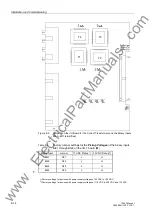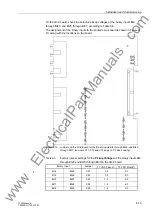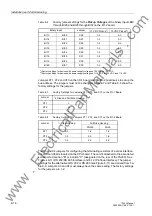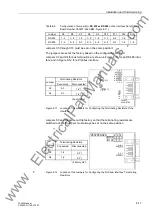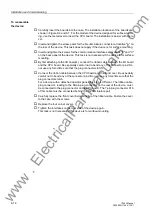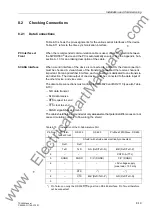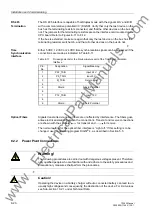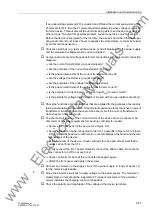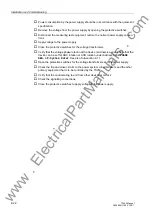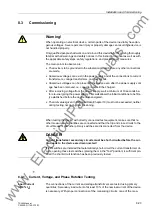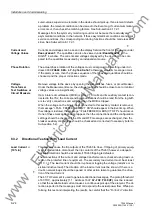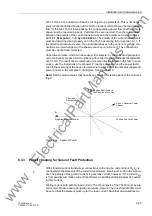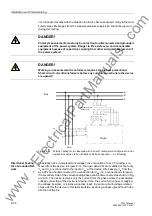
Installation and Commissioning
8-28
7SJ63 Manual
C53000-G1140-C120-1
!%/2&.1
(H)]. The elements have slight time delays to provide coordination
with the protective blocking relays. The blocking relays are the three feeder relays.
Each feeder relay has a blocking contact programmed to close when the 51 element
or 51N element picks up. The three contacts are connected in parallel to apply control
voltage to Binary Input 1 when any one of them closes.
An actual scheme might employ elements and binary inputs other than those given in
the example. The binary inputs could also be set to block tripping when the inputs are
de-energized. The blocking devices might be configured differently as well. In any
case, testing and operationally checking a reverse interlocking scheme are typically
simple. The procedures below can be adapted as needed.
With the 7SJ63 isolated from the current transformers and tripping circuits, inject test
current into any one phase current input and the ground current input. Slowly ramp-up
the current until the pickup values of 50-2 and 50N-2 are found (monitor contacts or
LEDs). Slowly decrease the current until the dropout values are found. Verify that the
pickup and dropout values are as expected.
The time delays of the elements can be measured with a timer set to start on the ap-
plication of current and stop on the closure of the trip contact masked to close when
either 50-2 or 50N-2 trips. Test one element at a time. For either element, first set the
time delay for 0.00 second. Suddenly apply current greater than the pickup value.
Record the time. Repeat the test with the time delay included. The difference between
the results provides an estimate of the time delay. Be sure the time delays are as ex-
pected.
The tripping block can be verified by manually applying voltage to Binary Input 1, and
injecting a test current above the pickup of the element under consideration, for a time
period much longer than the time delay setting.
To operationally check the scheme, current can be simultaneously injected into the
7SJ63 and one of the feeder relays. The feeder relay must be isolated from current
transformers and trip circuits of primary equipment. Proper backup relaying should be
available. The magnitude of the test current must be high enough to pickup both the
feeder blocking element and the 7SJ63 tripping element. (The blocking element could
be less sensitive in secondary terms.) Suddenly apply the current and verify that 50-2
and 50N-2 are blocked. Suddenly remove the current and verify that 50-2 and 50N-2
do not trip. If the blocking element has an equal or higher sensitivity than the tripping
element, then tests in which the current is slowly decreased can be done to verify that
there are no element dropout-miscoordinations.
Repeat the testing for each blocking device.
Restore the current and tripping circuits of the 7SJ63 and the feeder relays.
Caution!
During testing, observe the current ratings of the inputs given in Technical Data, Sub-
section 10.1.1. Continuous currents for the phase and ground inputs must be less than
or equal to [4 · I
N
]. The continuous rating for the sensitive ground input is different. Al-
low a cool-down period if the continuous ratings are exceeded.
www
. ElectricalPartManuals
. com

